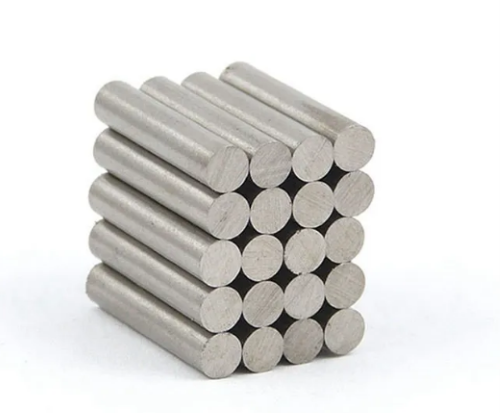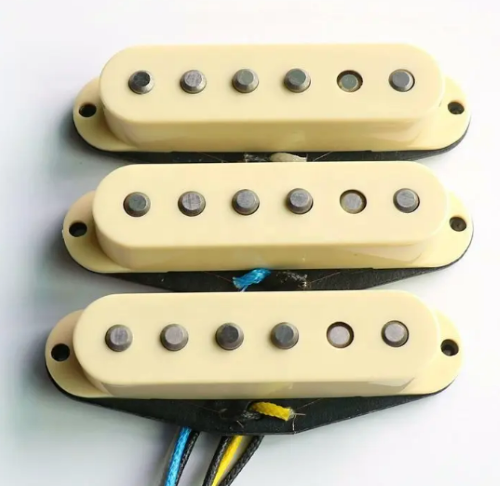3 Interesting Facts about Alnico Magnets
1. The Timeless Appeal of Alnico Magnets
The Birth of Alnico Magnets
Alnico magnets were first introduced around the 1920s, making them over 100 years old. These magnets are made from a combination of aluminum (Al), nickel (Ni), and cobalt (Co), which are alloyed with small amounts of other metals like copper and iron. Their name comes from the first few letters of these materials: Al for aluminum, Ni for nickel, and Co for cobalt.
Historical Significance
Before the invention of Alnico, permanent magnets were primarily made from steel or iron, which had much weaker magnetic properties. The development of Alnico allowed for the creation of much stronger and more reliable magnets, revolutionizing industries such as electronics, automotive, and telecommunications. The increased strength of these magnets made them invaluable in a variety of devices that required a compact, powerful magnetic field.

The Timeline of Development
- Pre-Alnico Era: Before the 1930s, magnets were made from soft iron or steel, which lacked strength and stability. Magnet use grew in the 19th century.
- Birth of Alnico (1930s): General Electric (GE) discovered Alnico by combining aluminum, nickel, and cobalt, creating a stronger, more stable magnet alloy.
- Refinement (1940s-1950s): The introduction of cast Alnico magnets allowed for complex shapes. Alnico became popular in audio equipment, motors, and generators due to its high coercivity and thermal resistance.
- Mid-20th Century Applications: Alnico magnets were widely used in guitar pickups, microphones, speakers, and medical instruments like MRIs.
- Rise of Rare-Earth Magnets (1970s-Present): Neodymium and samarium-cobalt magnets emerged, offering higher strength. However, Alnico remained relevant for high-temperature applications and cost-effectiveness.
- Modern Use: Alnico continues to be used in guitar pickups, motors, and generators, especially where reliability at high temperatures is key.
2. What Are Alnico Pickups
Definition of Alnico Pickups
Alnico pickups are a type of magnet used in the construction of electric guitar pickups. In electric guitars, pickups work by converting the vibrations of the strings into electrical signals, which are then amplified. The type of magnet used in the pickup has a significant effect on the sound characteristics.
The Role of Alnico Magnets in Sound
The primary reason Alnico magnets are used in pickups is because of the unique sound they produce. Alnico magnets create a warm, smooth tone, often with a bit of natural compression that adds character to the sound. They are highly valued for their vintage appeal, which is why they're favored by musicians looking for the classic tones heard in old-school rock, blues, and jazz.
The type of Alnico magnet used in the pickup also plays a big role in shaping the sound. The strength of the magnet affects the sensitivity, clarity, and output of the pickup. Alnico magnets come in several different grades, each producing a unique tone:
- Alnico 2: Known for producing a smooth, mellow sound with a slightly weaker magnetic field, which gives it a soft and vintage tone. Alnico 2 pickups are often chosen by guitarists who prefer a more subtle and "classic" sound.
- Alnico 3: This grade is rarer and has a lower magnetic strength, offering a warm, vintage feel with a bit of clarity and a less pronounced bass response.
- Alnico 5: This is the strongest and most commonly used Alnico magnet. It produces a bright, punchy sound with pronounced highs and mids, making it ideal for more aggressive styles of playing while still retaining some warmth and clarity.

3. Why Choose Alnico Pickups
Pros of Alnico Magnets in Pickups
- Vintage Sound: Alnico magnets provide a rich, organic tone that many musicians associate with the classic sounds of the 50s and 60s.
- Warmth and Clarity: Unlike ceramic magnets, which can be harsh or overly bright, Alnico magnets have a natural warmth and smoothness that many players find desirable.
- Dynamic Range: Alnico pickups tend to respond well to changes in playing technique, meaning the tone can shift based on how hard or soft you play.
Cons of Alnico Pickups
- Price: Because of their vintage appeal and the materials involved, pickups with Alnico magnets tend to be more expensive than those with ceramic magnets.
- Power: Alnico magnets, especially in grades like Alnico 2 and 3, are generally not as powerful as ceramic magnets, which may be a consideration for guitarists who need high output for certain genres like heavy metal.
Conclusion
Alnico magnets have been around for over a century, and their use in electric guitar pickups is a prime example of how these classic magnets continue to shape modern music. Whether it's the smooth, vintage tone preferred by blues guitarists or the powerful, punchy sound favored by rock musicians, Alnico magnets remain a critical part of the musical landscape. Their unique ability to blend warmth, clarity, and dynamic range makes them a favorite among players looking for that distinctive, vintage guitar sound. For more information, please check Stanford Magnets!














